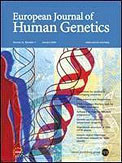Stechova K, Halbhuber Z, Hubackova M, Kayserova J, Petruzelkova L, Vcelakova J, Kolouskova S, Ulmannova T, Faresjö M, Neuwirth A, Spisek R, Sediva A, Filipp D, Sumnik Z. Eur J Hum Genet. 2012 Apr;20(4):457–62. doi: 10.1038/ejhg.2011.212. Epub 2011 Nov 23. IF: 4.400

Department od Paediatrics
Abstract
Type 1 diabetes (T1D) is an autoimmune disease characterized by the lack of insulin due to an autoimmune destruction of pancreatic beta cells. Here, we report a unique case of a family with naturally conceived quadruplets in which T1D was diagnosed in two quadruplets simultaneously. At the same time, the third quadruplet was diagnosed with the pre-diabetic stage. Remarkably, all four quadruplets were positive for anti-islet cell antibodies, GAD65 and IA-A2. Monozygotic status of the quadruplets was confirmed by testing 14 different short tandem repeat polymorphisms. Serological examination confirmed that all quadruplets and their father suffered from a recent enteroviral infection of EV68-71 serotype. To assess the nature of the molecular pathological processes contributing to the development of diabetes, immunocompetent cells isolated from all family members were characterized by gene expression arrays, immune-cell enumerations and cytokine-production assays. The microarray data provided evidence that viral infection, and IL-27 and IL-9 cytokine signalling contributed to the onset of T1D in two of the quadruplets. The propensity of stimulated immunocompetent cells from non-diabetic members of the family to secrete high level of IFN-α further corroborates this conclusion. The number of T regulatory cells as well as plasmacytoid and/or myeloid dendritic cells was found diminished in all family members. Thus, this unique family is a prime example for the support of the so-called ‘fertile-field’ hypothesis proposing that genetic predisposition to anti-islet autoimmunity is ‘fertilized’ and precipitated by a viral infection leading to a fully blown T1D.
-mk-